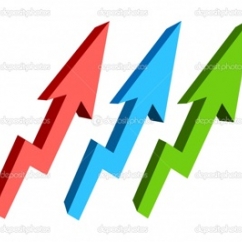Articles and News
AFFLUENTS’ OPTIMISM ON THE RISE; BUDGET SEQUESTER NOT LIKELY TO SPUR RECESSION March 06, 2013 (0 comments)

Merrick, NY—Affluent consumers’ optimism about both the U.S. economy and their own personal futures rose in February, according to the latest Mendelsohn Affluent Barometer, conducted by Ipsos MediaCT. The Mendelsohn survey defines “affluent” as households with at least $100,000 annual income, or approximately 20% of U.S. households. While the $100,000 income threshold doesn’t feel nearly as affluent in high-cost cities like San Francisco or New York City as it would in, say, Des Moines, IA, this demographic still holds 69% of all privately held net worth in the United States and is vitally important to luxury marketers.
In February, 43% of affluents surveyed were optimistic about the U.S. economy, up from 40% in December 2012 and only 34% in October 2012. That figure rises to 48% among the ultra-affluent (annual income over $250,000).
Additionally, more than half (52%) of all affluent consumers now believe they’ll be better off in 12 months than they are now. This figure marks an 11% gain from the 41% who said the same thing in December of last year.
Dr. Stephen Kraus, Ipsos’ senior vice president and chief insights officer said affluent optimism has been buoyed by the performance of both the stock and housing markets so far this year, as well as perceived improvements in the economy as a whole and the job market in particular. Indeed, the Febraury jobs report came out better than expected--198,000 new private-sector jobs vs. the original figure of 150,000 that was expected, and the stock market hit a record 14,253.77 on Tuesday. At press time Wednesday, it was set to break that record as well.
The Barometer predicts luxury spending among general affluents will likely remain steady at current levels, but shows significant growth potential among the ultra-affluent segment, approximately 2-4% of Americans. Ultra-affluent spending on luxury shows particularly strong growth potential in the travel, apparel, accessories, and watches and jewelry categories.
The Consumer Confidence Index also rose sharply in February, climbing 11.2 points with gains in both the present and future situation indexes. While February gains in the index often fall back later, the underlying factors do point to continued modest improvement in the economy. But the accent is on modest—in an economy powered by consumer spending, consumers feeling the recent hikes in both payroll taxes and energy prices are not necessarily in the mood to go on a shopping spree yet.
Separately, fears that the government budget sequester will throw the economy back into recession are unlikely to materialize, says John E. Silvia, chief economist for Wells Fargo. The budget cuts will have some slight negative consequences on economic growth in the near term, but long term the plan supports higher levels of growth. By contrast, if the sequestration is canceled or reversed, it would mean greater short-term growth but could impact growth long term.
In this special commentary, Silvia explains that the cuts come from a mix of both current spending (budget outlay) and planned future spending (budget authority). Budget outlay cuts are what will most impact the GDP, vs. money that’s been authorized to spend but hasn’t actually been spent. Budget outlay spending is to be cut only $44 million in 2013, not the widely reported $85 million, which includes the budget authority. Negative effects on growth this year will be minimal, but as planned future expenditures don’t come to fruition, it will become more severe in later 2014 and beyond. Nevertheless, says the report, even those added headwinds should not be enough to derail the improvements in economic growth.







